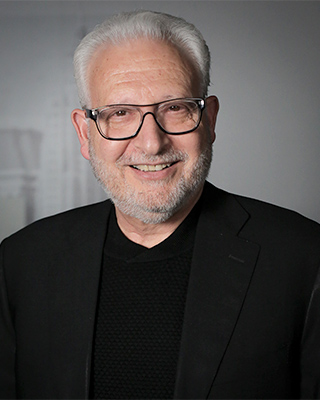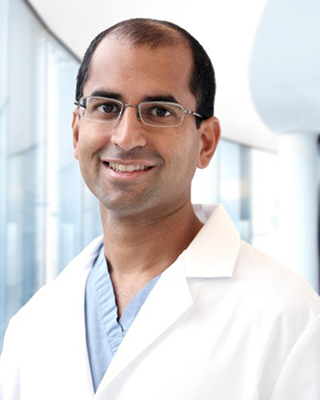NewYork-Presbyterian Marks 20 Years of TAVR at TCT Conference
TAVR, a procedure pioneered at NewYork-Presbyterian and Columbia that transformed cardiac care, celebrated its 20th anniversary at the Transcatheter Cardiovascular Therapeutics (TCT) conference.
Oct 6, 2022
New York, NY

Since its first U.S. use in 2002, NewYork-Presbyterian has helped pave the way for the advancement of transcatheter aortic valve replacement (TAVR), a minimally invasive procedure for patients who need a new heart valve.
At the TCT conference, held September 16 – 19 in Boston, the pioneers of TAVR celebrated the milestone anniversary and highlighted other recent studies aimed at improving cardiovascular care.
Dr. Martin B. Leon
“We are so pleased to celebrate the 20th anniversary of TAVR, its innovators, and the procedure’s transformational impact on patient care,” said Dr. Martin B. Leon, director of the Center for Interventional Cardiac Care at NewYork-Presbyterian/Columbia University Irving Medical Center and Mallah Family Professor of Cardiology in the Department of Medicine at Columbia University Vagelos College of Physicians and Surgeons. “We are proud of our team’s visionary role in the structural heart space and our contributions to cardiovascular medicine and look forward to continuing to innovate and make further advances to benefit patients,” said Dr. Leon, who founded the TCT conference in 1988 and led the team at NewYork-Presbyterian/Columbia that pioneered TAVR.
TAVR is used for patients with aortic stenosis, or narrowing of the aortic valve, which prevents blood from flowing properly. Roughly five percent of people over the age of 75 will experience aortic stenosis, and many will require a heart valve replacement.
Prior to the advent of TAVR, the only treatment for severe aortic stenosis was open heart surgery—yet many of those same patients were too ill for invasive surgery.
Now, the majority of patients with aortic valve stenosis have a minimally invasive option with TAVR. In the TAVR procedure, a replacement heart valve is advanced on a specially designed catheter through the groin and to the heart. Patients are often discharged from the hospital within 24 hours. There is no surgical wound beyond the small puncture mark where the catheter was inserted.
Over the years, NewYork-Presbyterian and Columbia University have participated in several clinical trials that helped TAVR achieve FDA approval and continue to advance. NewYork-Presbyterian has also trained many of the physicians performing TAVR in the nation. With TAVR now available for increasingly lower-risk operative patients, NewYork-Presbyterian/Columbia University Irving Medical Center and NewYork-Presbyterian/Weill Cornell Medical Center physicians are working on techniques to facilitate and improve the safety of valve-in-valve TAVR, which may help with the lifetime management of these patients.
Late-breaking studies
Celebrating 20 years of TAVR was just one part of the TCT conference, an annual educational forum which features major medical research breakthroughs and gathers leading researchers and clinicians from around the world to present and discuss the latest evidence-based research.
Highlights from this year’s TCT include:
- Cerebral Embolic Protection During Transcatheter Aortic Valve Replacement: The PROTECTED TAVR Study
“Stroke caused by debris after TAVR, although rare, remains a devastating complication for patients,” said Dr. Leon, chair of the study, which looked at the ability of a device to reduce stroke in TAVR patients. It is the largest study of prevention of plaque debris for TAVR ever conducted, with 3,000 participants enrolled. “The use of cerebral embolic protection filters may represent an important advance in the care of these patients by potentially reducing stroke risk and preserving cognitive function.”
- CLASP II D Trial
NewYork-Presbyterian/Columbia is an investigator site for this trial, studying a mitral valve repair device for patients with mitral regurgitation. The study demonstrated that transcatheter edge to edge (TEER) mitral valve repair (clipping leaflets of the heart together) with the latest generation device was safe and effective. This study led to FDA approval of the device and provides physicians with another device to treat mitral valve disease without surgery.
- Sham-Controlled RADIANCE II Pivotal Trial
Dr. Ajay Kirtane
Led by Dr. Ajay Kirtane, interventional cardiologist and director of cardiac catheterization laboratories at NewYork-Presbyterian/Columbia University Irving Medical Center, the RADIANCE II trial was a follow-up study for an ultrasound renal denervation system to treat patients with mild to moderate uncontrolled hypertension. “We are thrilled to observe these positive results of RADIANCE II, potentially adding another tool to help patients manage high blood pressure in the near future,” said Dr. Kirtane, who is also a professor of medicine at Columbia University Vagelos College of Physicians and Surgeons.
Media Contact:
Office of Communications [email protected]





